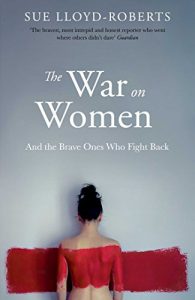Sue Lloyd-Roberts joined ITN in 1973 as a news trainee, she went on to become the UK's first female video-journalist, reporting alone from the bleak outposts of the former Soviet Union and China. With a 30-year-long career in human-rights journalism, she has travelled the globe and witnessed the worst atrocities inflicted on women. Observing first-handthe war on the female race, she's experienced and interacted with the brave ones who fight back.
This is a breath-taking and visceral narrative, interweaving the real-life experiences of the heroines combating gross inequality. It is an examination of how women are treated across the globe: from the pay gap in the UK and the laundries in Ireland, to gender discrimination in Saudi Arabia and female genital mutilation in Africa.
In a world where the issues facing women are so disparate, we're facing a war of varying extremities and this has created a breakdown in the feminist discourse. But through her extraordinary and unique experiences, Lloyd-Roberts starts to build a bigger picture with a pervasive perspective.
The book delves into our history and takes us on a journey towards the analysis of the state of women's lives in modern-day society. This is a ground-breaking approach to a global problem; anecdotal evidence bridges the gap between different fights and gradually starts to knit together the battles being fought by the starkly different cultures across the world.
This is a breath-taking and visceral narrative, interweaving the real-life experiences of the heroines combating gross inequality. It is an examination of how women are treated across the globe: from the pay gap in the UK and the laundries in Ireland, to gender discrimination in Saudi Arabia and female genital mutilation in Africa.
In a world where the issues facing women are so disparate, we're facing a war of varying extremities and this has created a breakdown in the feminist discourse. But through her extraordinary and unique experiences, Lloyd-Roberts starts to build a bigger picture with a pervasive perspective.
The book delves into our history and takes us on a journey towards the analysis of the state of women's lives in modern-day society. This is a ground-breaking approach to a global problem; anecdotal evidence bridges the gap between different fights and gradually starts to knit together the battles being fought by the starkly different cultures across the world.






